The Winslow Boy Theatre Review
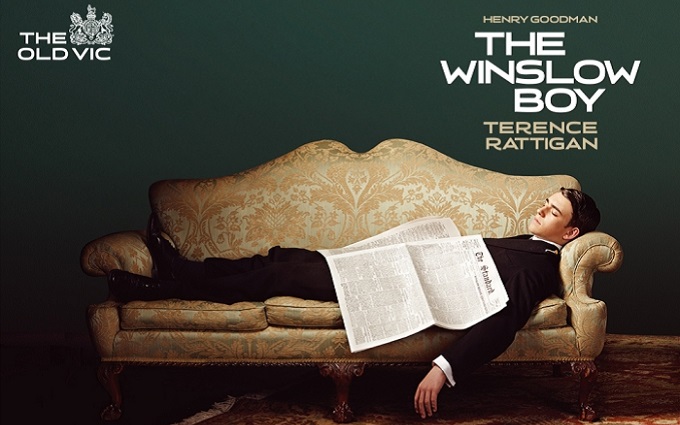
Theatre goers, its a travesty that seats are being left empty for The Winslow Boy at The Old Vic. Having entered the theatre and not knowing what to expect, audiences of all walks of life will find themselves in fits of laughter during the comedic first half and welling up at some of its most poignant moments further in.
The Winslow Boy is the story of an Edwardian British household, who’s head, the father – Arthur Winslow, fights for the justice of his thirteen year old son who is accused of stealing a postal order whilst away at Naval College. Putting the rest of his family at risk in terms or reputation, money and lifestyle, it shows that even in the most trivial of circumstances which could easily be brushed under the carpet, one must fight for what is right and just, even if it means losing everything.
If carried out at the correct pace, and it was demonstrated so excellently here, then The Winslow Boy and indeed other Terrence Rattigan plays can be a delight. This roller coster of emotions plays out excellently here, with every character keeping their ‘stiff upper lip’ whilst fully aware of the consequences they face individually and as a family. Henry Goodman as Arthur Winslow is an excellent leader of this pack. Although riddled with gout and suffering arthritis, his sharp tongue and affectionate charisma towards his family and indeed the audience makes him a loveable central figure we can all relate to.
Naomi Frederick who plays Arthur’s daughter Catherine, demonstrates a strong yet relatable character, reminding us clearly and passionately of the struggles women faced in society at that time – her work with the suffragettes is regarded as pointless and with no sense of hope – she deals with the criticism of her standing with grace and dignity and Frederick manages balance a large array of emotions with effortless ease, making her a character with so many levels that the audience find her a joy to watch.
All the actors in this production provide sterling performances, however, another standout worthy of mention is Charlie Rowe, the Winslow boy himself. It’s clear to see that this young actor has a bright future ahead of him. He treads the boards of the Old Vic with ease and experience beyond his years, with particular examples of excellence being his emotional reaction to Sir Robert Morton’s interrogation where audience members feel so uncomfortable in their seats that they almost want to leap out of your seat and protect the poor boy.
Terrance Rattigan plays are full of fast paced, easy to listen conversations with subtle comedies about them which allow audiences of different generations to relate to and enjoy. For a cast to deliver this as it should be is no easy task, and this cast in particular should be applauded for their efforts and supported for all their hard work. The Winslow Boy is an infectious play which gets under your skin, and makes you think about the characters and their circumstances long after the curtain has fallen. It has an effect on its audience with its relatable nature and charismatic character charms. Well worth a watch, and worthy of all the rave reviews it’s been receiving.
Welcome To The Punch Review
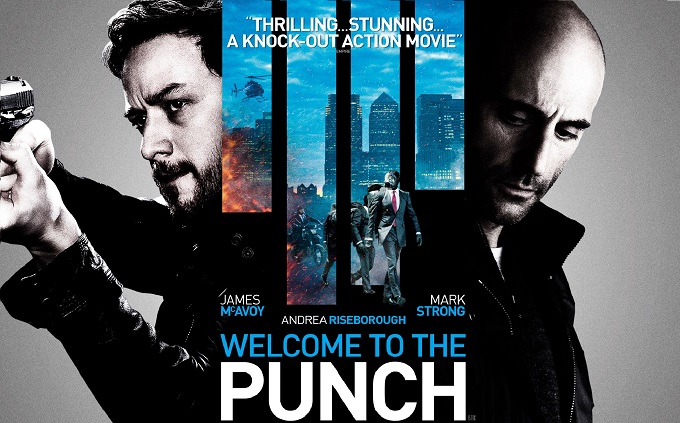
The Plot:
A legendary retired criminal Jacob Sternwood is forced to return to London when his son is shot and ends up in police custody. This gives his former nemesis, a broken young detective called Max Lewinsky, one final chance to catch him and regain his pride.
The Good:
Dirctor Eran Creevy graduates with ease from his impressive ultra-low budget debut Shifty to deliver one of the most competently composed and stylish British action films in recent years. He emulates the slick noirish visuals of the Hong Kong and American action genres, whilst managing to avoid the pitfalls of misguided imitation. It’s painfully easy for British action films to feel like cheap impersonations and you only have to look at the recent re-imagining of The Sweeny for a frankly ridiculous example of this. This film thankfully succeeds where so many others have failed.
The film delivers a view of London that is authentically dangerous, sexy and devoid of all the usual clichés. You won’t spot the London Eye or cheerfully red double decker buses, that kind of things that instantly rob so many British crime dramas of their gritty credibility. Creevy inventively captures London as a world of glittering skyscrapers and dark alleyways.
Creevy also makes clever and economical choices with his action sequences. The film’s opening chase scene is an excellent example, creating a sense of scale and tension without relying on the expensive mayhem of explosions and countless unnecessary car crashes. Well-chosen camera angles and taunt scripting achieve the same effect.
Versatile British actor Mark Strong is very well experienced in playing memorable villains in big budget blockbusters. He’s successfully tackled that challenge many times before in Sherlock Holmes, Stardust, John Carter, Robin Hood and Kick-Ass. Strong has a captivating and commanding presence on screen that allows him to malevolently dominate scenes. In this role he combines that ruthless power with just enough efficient charisma to make his character oddly admirable.
Handsome leading man James McAvoy has his own growing army of fans, which offers the film an obvious selling point. In truth though he actually deliver an unselfish performance, playing a far more flawed and scruffy hero than the perfect super-cop you might expect.
Fellow Brit Johnny Harris is also superb as the real villain of the piece; a former soldier turned menacing mercenary. Easily the film’s most memorable moment sees the three finally squaring off against each other in an old ladies living room. It’s an indisputable flash of genius in an already strong script.
The rest of the cast is full of familiar faces like Peter Mullan, David Morrissey, Ruth Sheen, Daniel Mays and Andrea Riseborough. They all deliver competent performances with the varied screen time they’re given. Rising star Riseborough in particular adds a touch of class to proceedings as she spars with both McAvoy and Johnny Harris.
The Bad:
Obviously a modest budget does deny audiences the type of spectacular spectacle they may have grown accustomed to. The film’s reserved action style is far more inspired by Michael Mann than Michael Bay. Those misguidedly waiting to see London devastated by the collateral damage of countless explosions will be left disappointed.
Although the film has more style and substance than any typical British gangster movie it can’t entirely avoid predictability. By about half way through it is fairly easy to map out where the story is ultimately heading. Although it still remains satisfying to watch things play out in a climatic hail of gunfire.
The Ugly Truth:
Welcome To The Punch firmly announces the arrival of Eran Creevy as a promising directing talent and defies the conventional limitations of the typically atrocious British action genre. The criminally underrated Mark Strong and Johnny Harris largely steal the show in memorably villainous performances.
Red Carpet Interviews form the London premiere below, including Mark Strong, Johnny Harris and Director Eran Creevy:
Oz The Great And Powerful Review
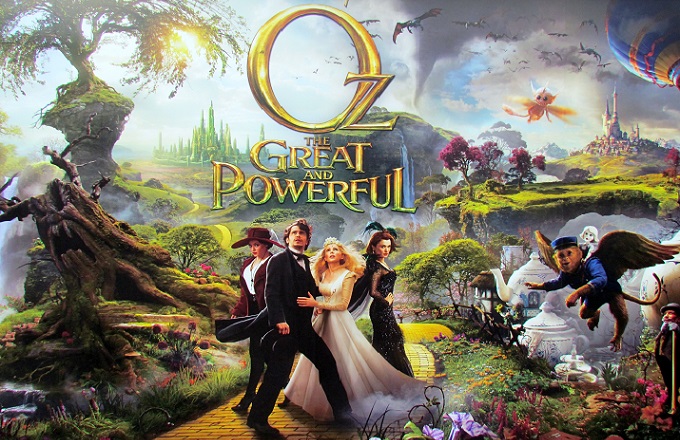
The Plot:
A selfish circus magician called Oscar Diggs finds himself carried away from the dreary troubles of Kansas and hurled into the vibrant Land of Oz by a violent storm. He’s quickly drawn into an epic struggle between the forces of good and wickedness by the promise of fame and fortune. Battling witches and flying monkeys with only his con-man cunning, he must prove to both the inhabitants of Oz and himself that he truly is a great man, perhaps even a good one.
The Good:
Director Sam Raimi does a commendable job of commanding modern technology to fabricate an impressively lurid fantasy world in three dimensions. Beginning the film in Black & White with a narrowed screen and only switching to colourful widescreen as we escape Kansas and arrive in Oz is a nice nod to The Wizard of Oz and remains an effective cinematic metaphor almost 75 years later.
From the glistening green emerald city to the cheery yellow brick road, the new film borrows much from the iconic visual charms of the 1939 classic. However, it also combines that familiar camp imagery with a healthy injection of intricate CGI wizardry and whimsical weirdness. Given the film’s look and Danny Elfman soundtrack you’d be easily forgiven for mistaking it for one of Tim Burton’s better efforts. Of course, that isn’t necessarily a bad thing.
Leading man James Franco is a natural fit for the questionably heroic magician Oscar. He convincingly treads a fine line between being charming and suspiciously sleazy and despicably selfish. Franco has an undeniable charisma, but it flirts with arrogance in precisely the way it should for a self-important illusionist.
The film also boasts an impressive trio of powerful witches in beautiful leading ladies Mila Kunis, Rachel Weisz and Michelle Williams. Their combined aesthetic charms ensure the film is always very easy to look at. Williams in particular deserves great credit for being enchanting enough to keep the saccharine sweet Glinda the Good from ever being too unbearably earnest, instead giving her an almost serene grace.
Zach Braff provides a steady stream of light relief as Oscar’s devoted flying monkey sidekick. Hi bumbling antics are more genuinely amusing as an adorable animal. Though arguably the film’s most magical performance comes from young starlet Joey King, who voices a heartbreakingly sweet orphaned China Girl.
The Bad:
Past adaptations of L. Frank Baum’s fantastical world of Oz have varied wildly from the Technicolor musical kitsch of The Wizard of Oz to the surprisingly dark and wonderfully disturbing sequel Return to Oz. Both have their own merits but naturally appeal to wildly different tastes. In many respects this film lies somewhere between those two extremes. It might not be quite dark enough for those who prefer their fairy tales to be more genuinely Grimm, but it also veers well away from child-friendly cheerfulness at times.
The world of Oz is pretty but sometimes obviously a CGI fabrication. It probably won’t distract most people but it might disappoint those who prefer the rough textures and convincing shadows that only the real world can truly deliver. While characters like the Flying Monkeys and China Girl are flawlessly executed special effects creations, ‘blue screen acting’ does sometimes leave the real actors a little disconnected from the garish landscapes around them.
In terms of storytelling, after a strong opening that promises original adventure with flashes of genuine danger, the film gradually evolves into a more obvious prequel to The Wizard of Oz. Evil armies and wicked witches are inevitably conquered by magic bubbles and musical munchkins, partly taming the film’s climax.
The Ugly Truth:
Older fans of the original Judy Garland classic and younger audiences uninitiated in journeys down the yellow brick road should both be left equally satisfied by this vividly colourful fantasy. A well deployed arsenal of special effects and acting talent makes this film a thoroughly enjoyable 3D adventure.
Check out full Press Conference Interviews below with the entire cast and director Sam Raimi:
Liza Minnelli Concert Review
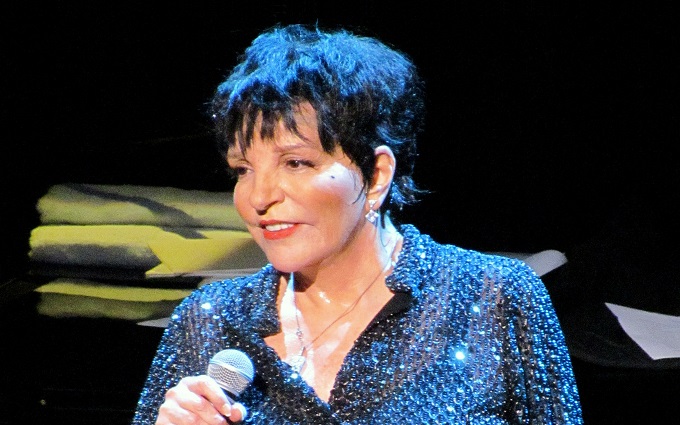
For this year’s The Rest Is Noise festival, the Southbank Centre welcomed back living musical legend Liza Minnelli, performing at Royal Festival Hall for the first time since 1973. After thirty years as an Oscar winning global Cabaret superstar and beloved gay icon, was it worth the wait….
The refurbished and revitalised Royal Festival Hall is one of the most plush performance spaces in London. Tonight its comfortable stalls and extravagant balconies are packed with people and audible excitement.
After a brisk and enjoyable opening set from cheery crooner Clare Teal the lights dim and the stage is set. The band emerges in white dinner jackets, black tie and anticipation. It’s time to come hear the music play.
Liza Minnelli rushes onto the stage and is immediately hit by the spotlight. She explodes instantly into a constantly breathless ball of nervous energy. She’s wrapped in a flowing red scarf and enough sequins to sparkle in the dark. The entire crowd immediately bursts to its feet for an unequivocal standing ovation. An act of devoted worship set to be repeated before, during and after every song to come.
For the first few songs the music is practically inconsequential, lost amongst Minnelli’s trademark breathy twitching, relentless quips and frequent audience screams of “We Love You Liza”. Finally the audience and the icon calm down just enough to be musically reminded this really is The Liza Minnelli performing, as she sings Liza with a Z.
At 66 years young, you’d be forgiven by anyone but this crowd for questioning whether or not Liza still has the physical and vocal stamina that’s seen her showered in awards and adoration for so many decades. Once she retreats to the static comfort of a high stool, the true quality of her unforgettable voice finally emerges.
The deep dramatic tones and throaty melody that makes her singing instantly recognisable have actually endured surprisingly well. Any occasional fragility in Minnelli’s voice feels more like a deliberate performance than a flaw. Perpetually startled and gasping for air is just the great diva’s style.
After sighing her way through the crowd pleasing What makes a man a man, Liza briefly takes pause to listen to pianist Billy Solo croon. Armed with an audible second wind, Liza finally delivers precisely what the audience came to see, inspiring full powered renditions of Maybe This Time and Cabaret.
For several magical minutes the Royal Festival Hall in the heart of modern London is transformed into the Kit Kat Klub in the sordid midst of the 1930s Weimer Republic. Minnelli is once again Sally Bowles, enchanting the frenzied audience to clap till their euphoric hands are happily raw.
After that Liza parades her way through a few more songs before triumphantly climaxing with New York New York. Drawn back onto the stage by thunderous applause for an encore, the immortal diva fittingly stands proud for an impressive acapella goodbye.
Turns out it was definitely worth the 30 year wait after all.
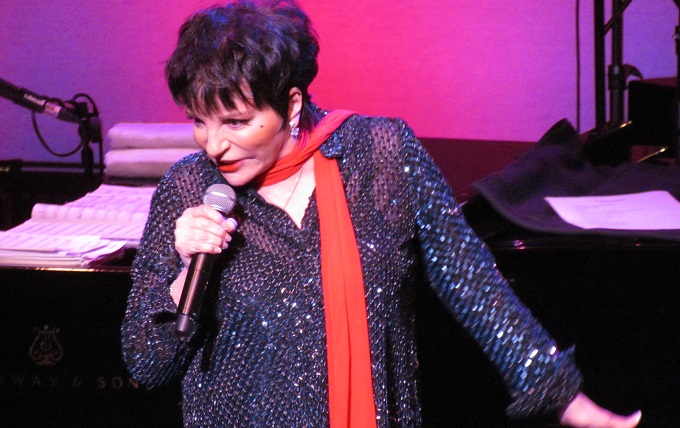
Stoker Review
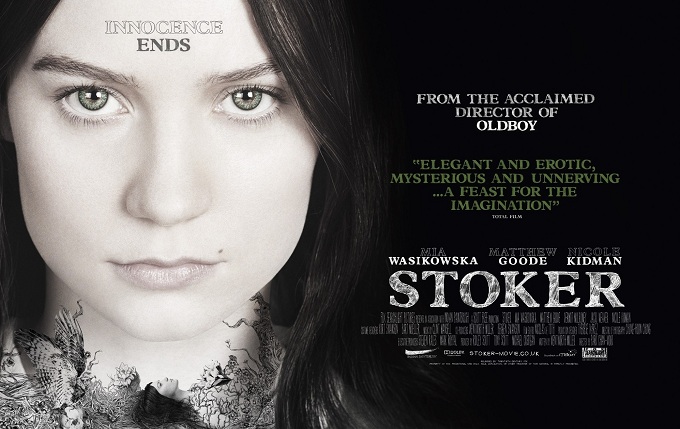
The Plot:
Following the sudden death of her father a troubled young girl living with her unstable mother suspects the mysterious uncle she never knew existed may have sinister ulterior motives when he arrives unexpectedly to move in.
The Good:
Korean director Chan-wook Park is responsible for notorious Asian cinema efforts like Sympathy for Mr Vengeance and Oldboy; with Stoker he makes his English language debut with a film equally loaded with brooding violence and dark psychological tensions. The film’s elegant cinematography and visual beauty are a stark contrast but fitting compliment to the story’s emotional core of seductive evil.
Mia Wasikowska is on absolutely scintillating form as India, a young girl haunted by both dark suspicions and demons of her own. The film’s provocative tagline is ‘innocence ends’ and her willing fall from grace as her infatuation with the mysterious Uncle Charlie grows is disturbingly fascinating. The young Australian actress is commendably uninhibited in a performance that doesn’t shy away from the most challenging aspects of psycho-sexual drama. She treads a fine line between victim and villain with intelligent poise and emotional precision.
British actor Matthew Goode likewise delivers an unflinching wide eyed performance as Uncle Charlie that is equally sinister and ruthlessly charismatic. He has a looming presence that is calculating, evil and yet believably seductive. The film uses his obvious incestuous charms to violently obliterate the boundaries of social and sexual taboos.
Perhaps the film’s most memorable character is actually its soundtrack. India claims to have superhuman hearing and magnifying the sound of an eggshell cracking or a throat nervously swallowing out of all proportion really does have a devastating effect on your sense of wellbeing. These intimate well-chosen noises heighten an already palpable sense of suspense, injecting sudden bursts of danger and fearful adrenalin.
The Bad:
Whilst Stoker is remarkably well composed and utterly effective at deliberately unnerving an audience, obviously not everyone will enjoy that experience. The film pushes well past the comparably safe territory of typical family melodrama and uncomfortably pokes around the darkest corners of unspeakable intimate fears.
Not everyone will welcome the films nightmarish descent into incestuous sexualized violence. But to be fair, anyone expecting escapist entertainment or emotional comfort from a Chan-wook Park film is either misguided or ill-informed. The film accomplishes precisely what it intendeds to, regardless of the damage it does to more sensitive souls.
The Ugly Truth:
Stoker is another magnificently visceral and unforgettable film from Director Chan-wook Park. His unique twisted genius has clearly lost nothing in translation for his first English language film. Powerful performances from a brave cast combined with deft use of unnerving sound and lush imagery will leave audiences satisfyingly shell-shocked. Though admittedly, more squeamish fans may find the more grisly and horrific aspects of the story hard to recover from. Stoker is a brilliant disturbing film, provided your faint heart can handle it.